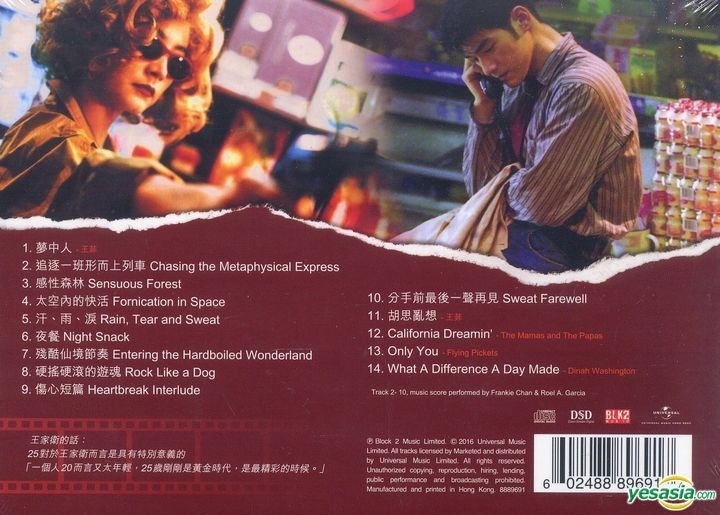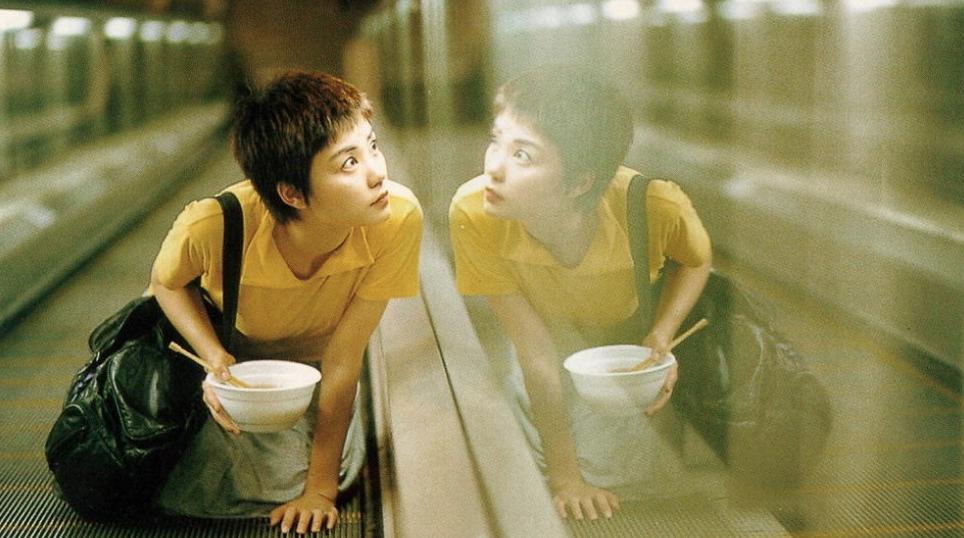

The lipstick combined with the platinum blonde hair are directly contradictory to the sunglasses and conservative coat. The colour red is indicative of being lustful and is overtly attractive to the eye.

Paradoxically, there is a pop of colour with the strikingly red lipstick and glasses. Wai exemplifies the instinctive reaction to protect oneself from the uncertainty that comes with exposing yourself. She is afraid to be noticed as it would run the risk of having someone want to know and appreciate her and potentially hurt her.
#Chungking express music windows#
Her tinted sunglasses at night hide all of her sadness and inevitably cover ‘the windows to soul.’ Lin hides behind veneers, to shield herself from bareness. The coat covers her entire body and its beige colour ensures she remains camouflaged amongst her external surroundings. Nevertheless, there is never a scene which displays her wearing alternative clothes, which suggests they are part of her persona. Ostensibly, she wears these items as a disguise for her drug trafficking career and because she ‘never know when it will rain and when it will be sunny’. A beige trench coat, blonde wig, red lipstick and sunglasses. Blondie always wears the same outfit and this shot makes no exception. This would then explain why Blondie chooses to dress how she does.Ĭostume designer, William Chang and makeup designer Lee- na Kwan collaborate to depict Blondie as a detached, yet seducing femme fatale. ‘You’ll never know me’ is a perfect example of this inviting no one to witness her rawest form. If the film is fundamentally about connection, then this character personifies someone who doesn’t want to be connected with and perhaps would rather be alone than extend herself. However, the cameras movement ceases before a more detailed shot is included which is frustrating for the audience, as we feel that we can never be truly intimate with this character. The fact that she is so prominent within the frame demonstrates that this is the closest we have been to Blondie. She is in her most vulnerable state of the film.

This is the point where she exhibits some of her opinions and feelings which is why we get the zoom up. It’s almost as if the director has nearly allowed us to finally connect with this recluse but then terminates the intimacy. While Blondie is narrating, the camera slowly eases into the subject, but comes to a halt before we get a clear close-up shot of her face. Not only does this reiterate her position of vulnerability, make us focus on the dialogue but also gives us the impression that in her state of depression she will be swallowed up by the frenetic pace and lifestyle of Hong Kong. It’s interesting to note that the subject has been shot from above.

The character is shown via a mirrors reflection as she looks up at the ceiling, speculating on human behaviour. One of the most dynamic shots, lasting just thirteen-seconds, 29 minutes into the story is of a mysterious woman in a blonde wig (Blondie), played by Brigitte Lin. With its exemplary cinematography, distinctly bold colour palette and unique sound design, Wong Kar Wai’s ‘Chungking express’ (1994) possesses some of the most evocative and powerful imagery in modern cinema.


 0 kommentar(er)
0 kommentar(er)
